Photos: Hobbit Relative Discovered on Flores
A Hobbit
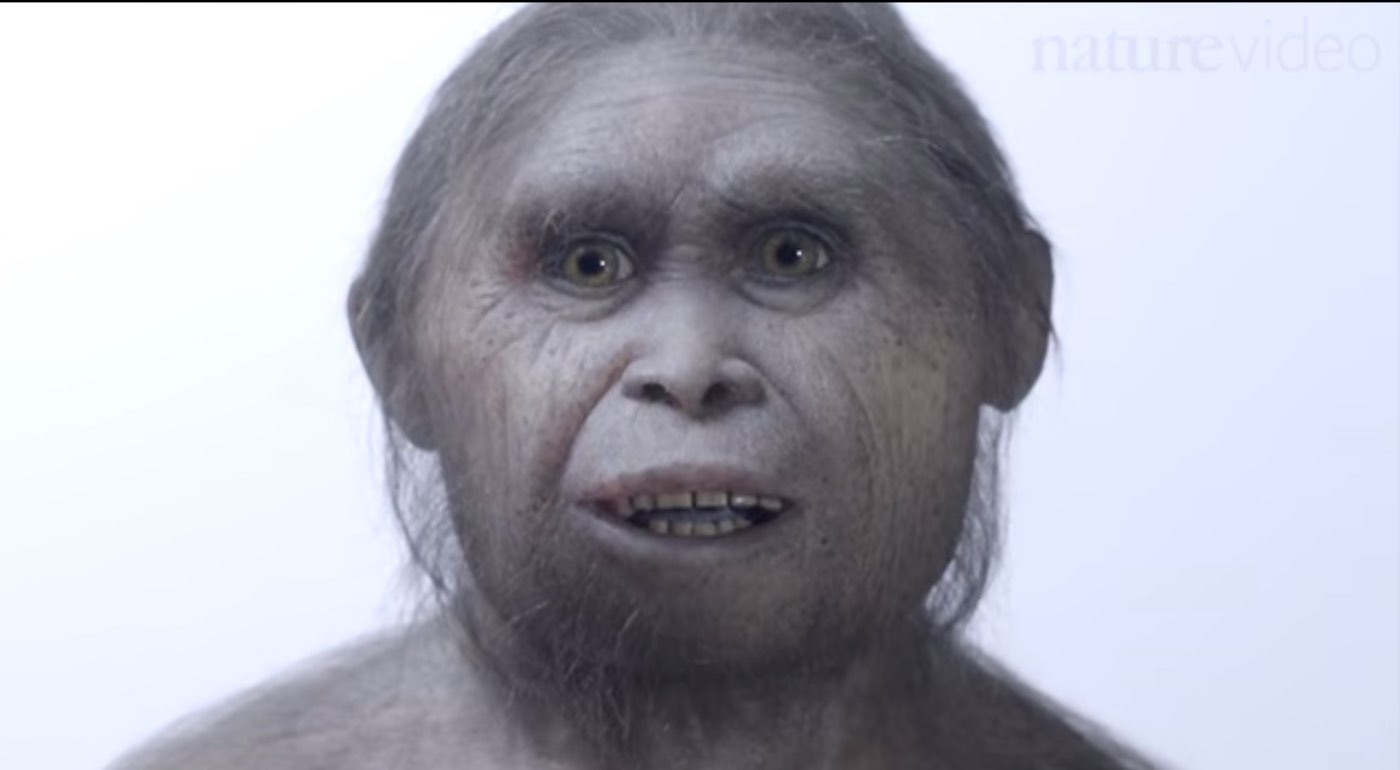
Scientists have uncovered fossils belonging to ancestors of the mysterious extinct human lineage nicknamed "hobbits” on the Indonesian island of Flores. The newfound species would have been smaller than the hobbits and lived much further back in time. The findings, detailed in the June 8, 2016, issue of the journal Nature, suggest these individuals shrunk rapidly after reaching the islands where the hobbits lived, the scientists said. Shown here, a reconstruction of Homo floresiensis by Atelier Elisabeth Daynes.
Here’s a look at the hominid fossils and the excavation on Flores.
Like Homo erectus
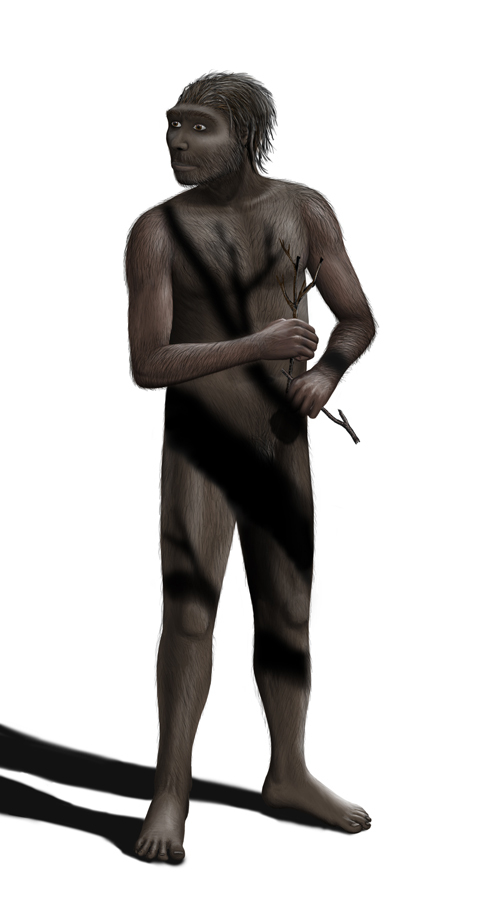
Scientists had thought that the small-statured hobbits were likely more related to smaller, more primitive humans, but the new findings suggest otherwise. Though the fossils are smaller than those of Homo floresiensis , the researchers said, they more closely resemble the more recent and larger-brained Homo erectus, shown here in this artist’s reconstruction. [Read the full story on the hobbit ancestor discovery]
Mata Menge
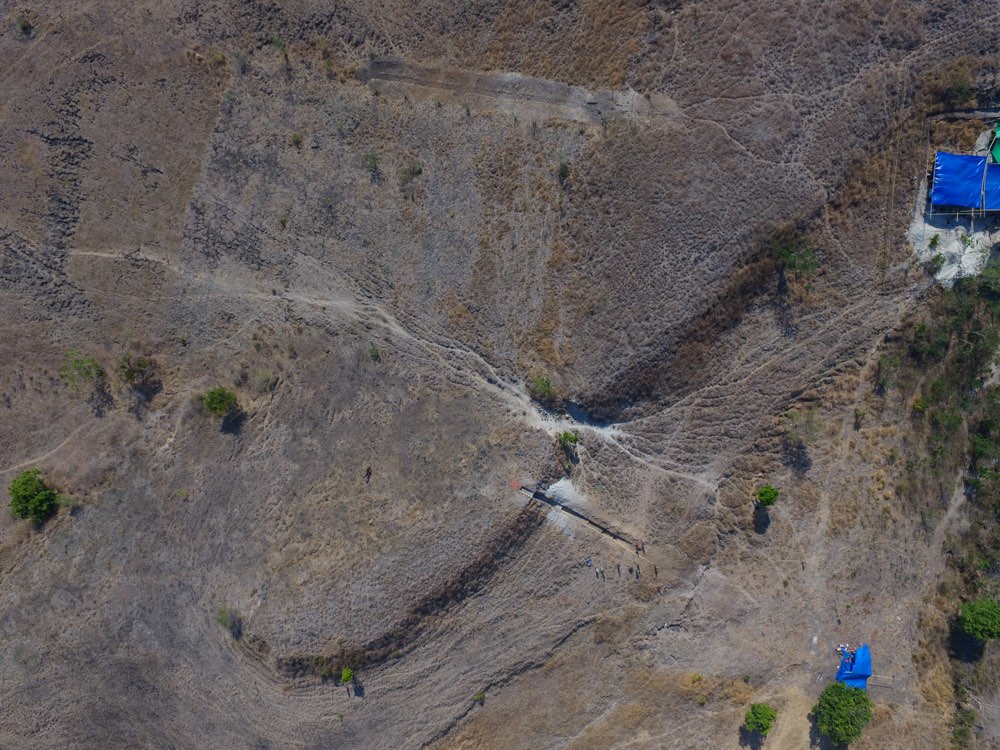
The researchers uncovered the new fossils in 2014 at the so-called Mata Menge site, located within the So'a Basin in central Flores, about 46 miles (74 kilometers) from Liang Bua, where the hobbit fossils were discovered. The researchers have been excavating in the area for more than 20 years. [Read the full story on the hobbit ancestor discovery]
Hobbit cave
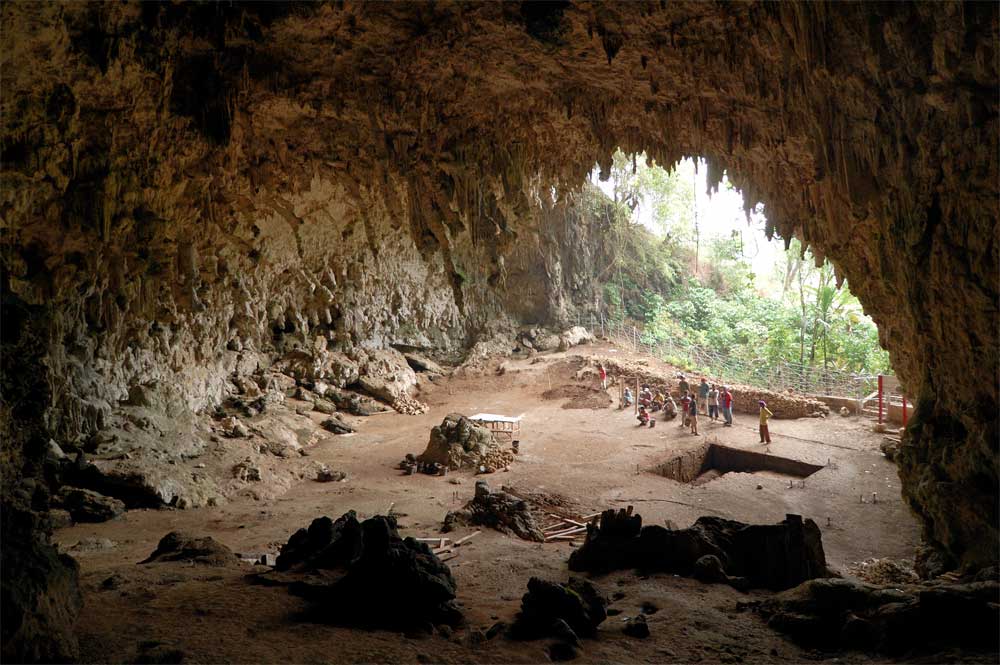
Here, an image of the Liang Bua cave where the Homo floresiensis fossils were unearthed beginning in 2004.
Mata Menge site - 2
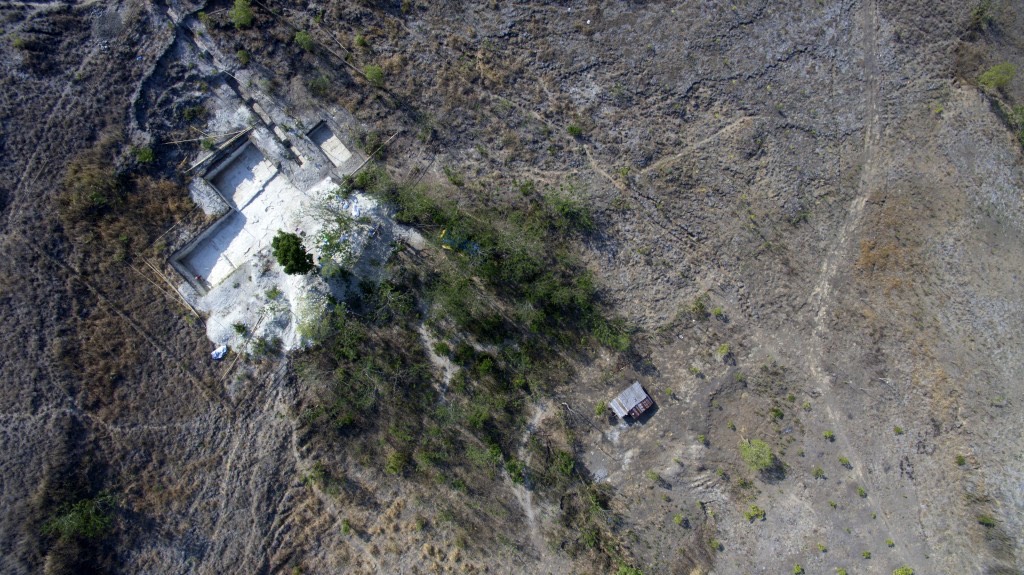
Here, an aerial image of Mata Menge taken in October 2015. Scientists unearthed the remains in what they found to be the bed of an ancient stream that was covered, sealed and preserved by an ancient volcanic mudflow. At the time the hobbit ancestors lived, the area was likely hot and dry, covered in savannah-like grasslands interspersed with wetlands, the researchers said.
Pointing to a Jawbone
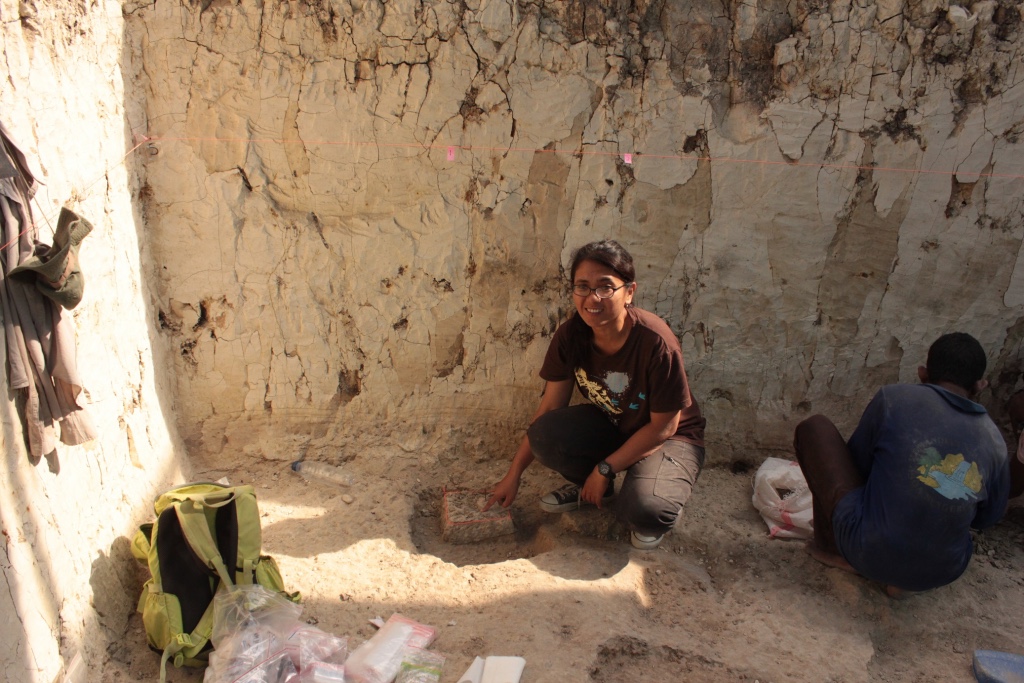
The remains dated back at least 700,000 years, much earlier than the hobbits, which date to between 60,000 and 100,000 years ago. The ancestors would have lived on Flores before any modern humans emerged on Earth, one of the study researchers, Yousuke Kaifu, a paleoanthropologist at Japan's National Museum of Nature and Science in Tokyo and said. Previous research has suggested that modern humans arose in Africa about 200,000 years ago.
Get the world’s most fascinating discoveries delivered straight to your inbox.
Here, Mika Puspaningrum, a doctoral candidate at the University of Wollongong in Australia, points to the spot where the mandible fragment from the hobbit ancestor was excavated.
Jawbone Added to 'Hobbit' Evidence
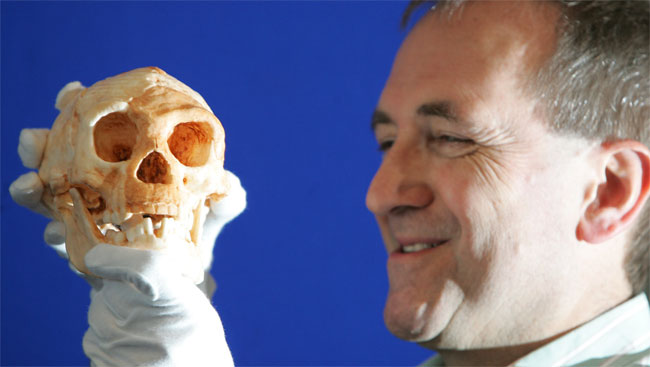
Professor Chris Stringer, Head of Human Origins at London's Natural History Museum, holds a cast of the skull of Homo floresiensis in 2004. Though no skull was found belonging to the hobbit ancestors, the researchers involved in the excavation said they expect to find more material, since the hominin fossils all came from the same layer of sandstone at Mata Menge. "This means that if we continue excavating this layer further, the likelihood of finding more human fossils is enormous,” said Gerrit van den Bergh, a paleontologist and geologist at the University of Wollongong in Australia and co-lead author of both studies published in Nature.
Hobbit Ancestor - jawbone
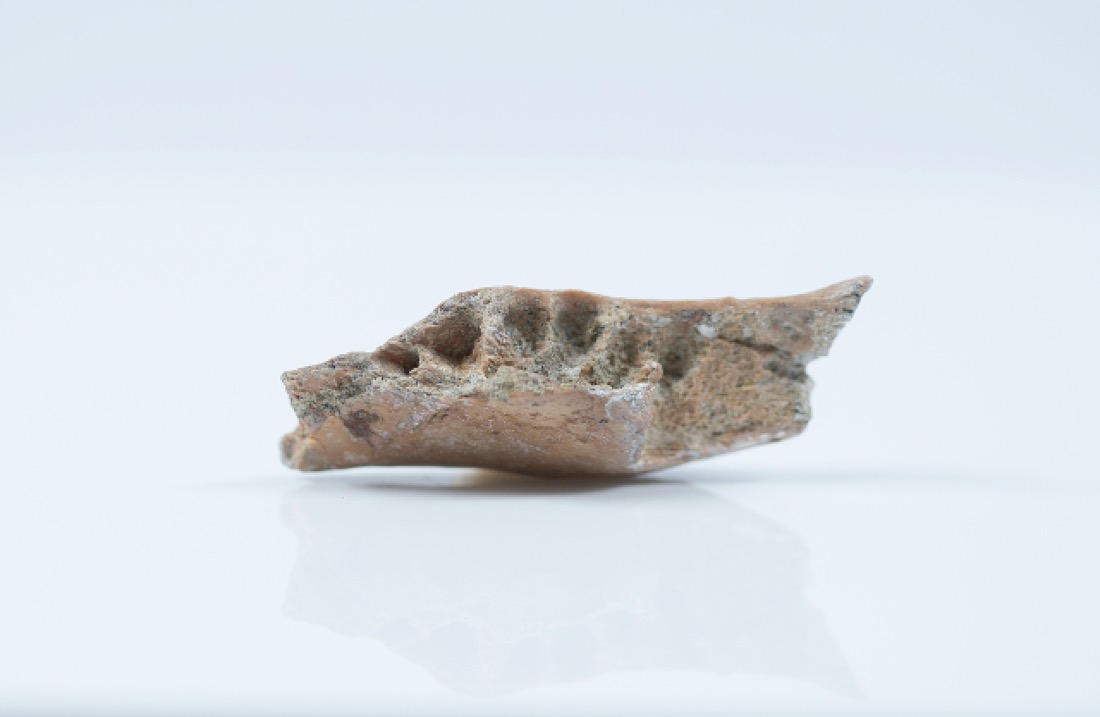
The researchers found that the Mata Menge jaw fragment, which would have been part of the lower jaw of an adult hobbit ancestor, is 20 percent smaller than the smallest lower jaw belonging to H. floresiensis from the Liang Bua cave. [Read the full story on the hobbit ancestor discovery]
Confirmation in a tooth
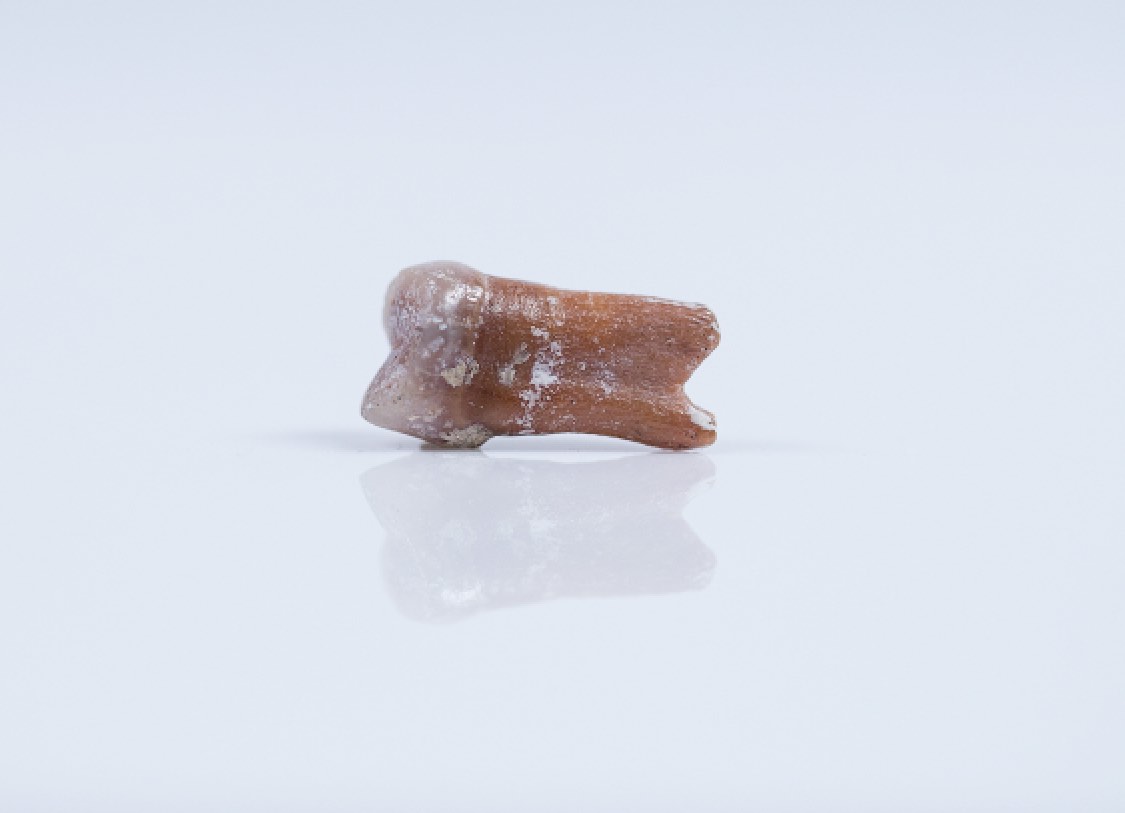
The teeth from the ancestors were also smaller than those of the hobbits found at Liang Bua. " Though tiny, the teeth helped to spur a big revelation: "The current findings — consistingof a lower-jaw fragment, an indeterminatecranial fragment and some small teeth from at least three different individuals — confirm beyond any reasonable doubt that H. floresiensis is a distinct hominin species with deep evolutionary roots that trace back more than 700,000 years," said Aida Gómez-Robles, a paleoanthropologist at George Washington University in Washington, D.C., who did not take part in this research, writing in a News & Views article in the same issue of the journal Nature.
Mata Menge excavations

The researchers described the excavation site at Mata Menge (shown here) as extremely hot and humid. "You take one step and you are soaked with sweat. To reach the site, it takes thousands of steps. Not much you can do about it, just bring enough water and try to slow down a bit compared to what you are used to," van den Bergh said. [Read the full story on the hobbit ancestor discovery]
Jeanna Bryner is managing editor of Scientific American. Previously she was editor in chief of Live Science and, prior to that, an editor at Scholastic's Science World magazine. Bryner has an English degree from Salisbury University, a master's degree in biogeochemistry and environmental sciences from the University of Maryland and a graduate science journalism degree from New York University. She has worked as a biologist in Florida, where she monitored wetlands and did field surveys for endangered species, including the gorgeous Florida Scrub Jay. She also received an ocean sciences journalism fellowship from the Woods Hole Oceanographic Institution. She is a firm believer that science is for everyone and that just about everything can be viewed through the lens of science.


